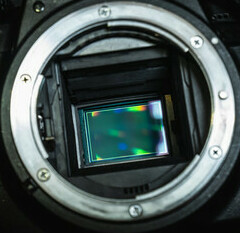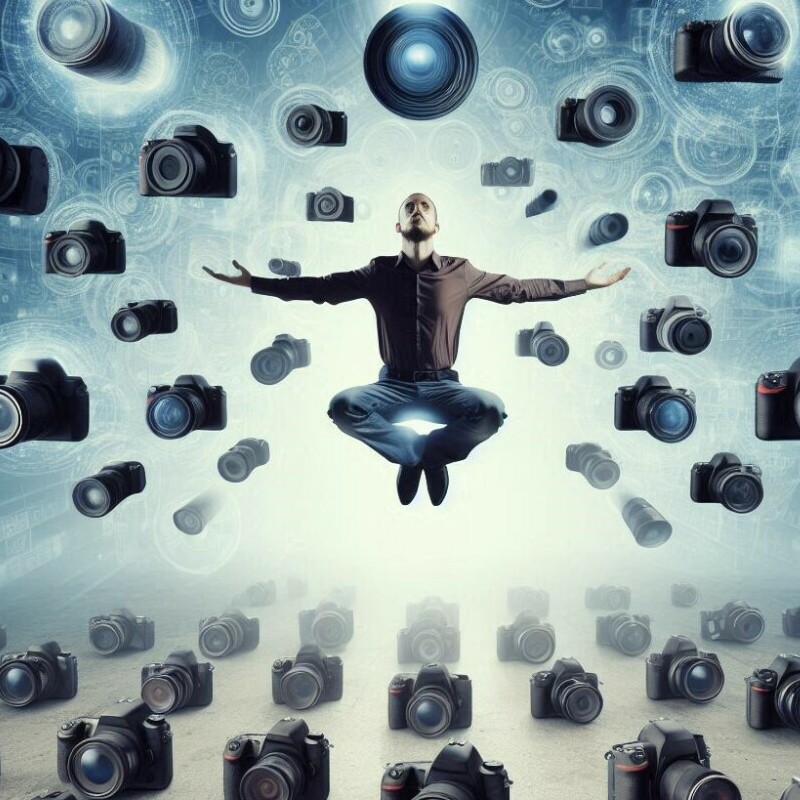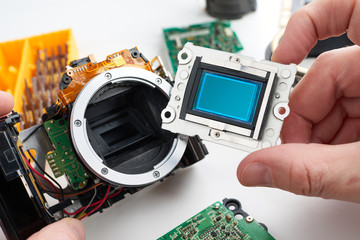Welcome readers! It took me quite some time to truly understand the importance of sensors in digital cameras, and I realized that many others might be in the same boat. In this article, I’ll dive into what camera sensors are, why they matter, and how they impact the quality of your photos. Whether you’re a seasoned photographer or just getting started, I hope you find this educational and insightful guide. Let’s explore the world of camera sensors together!
Camera sensors are like the heart of your digital camera. They capture the light and turn it into the photos we see and love. Understanding them helps make informed decisions when buying a camera.
You will come across two main types of sensors CCD (Charge-Coupled Device) and CMOS (Complementary Metal-Oxide Semiconductor). Each has its way of processing light, but CMOS sensors are more common in today’s cameras due to their lower power consumption and faster processing speeds.
So, how do sensors work? When you take a photo, the lens directs light onto the camera’s sensor. This light hits millions of tiny light-sensitive cells called pixels. Each pixel gathers information about the light – its intensity and color – and converts it into electrical signals. These signals are then processed and combined to create a full image.
Why does sensor size matter? A larger sensor can capture more light and detail, and give better image quality, especially in low-light situations. You get richer colors, finer details, and less noise. Bigger sensors also offer a shallower depth of field, which is great for portraits where you want that nice, blurred background look.
In digital cameras, you’ll encounter various sensor sizes. The most common ones are Full-frame, APS-C, and Micro Four Thirds. Full-frame sensors are the largest and usually found in high-end cameras. APS-C sensors are a bit smaller and often seen in mid-range cameras. Micro Four Thirds sensors are even smaller and typically in more compact systems. Each size has its advantages and trade-offs, which I’ll cover later.

Impact of Sensor Size on Image Quality
Sensor size plays a big role in determining the quality of your photos. It’s one of those things that can make or break your photography experience.
Larger sensors generally mean better image quality. This happens because larger sensors gather more light. More light means better performance in various aspects, such as depth of field, dynamic range, low-light conditions, and overall resolution and sharpness.
Depth of field is a significant factor that’s influenced by sensor size. Larger sensors can achieve a shallower depth of field, giving that beautiful background blur called ‘bokeh.’ This is perfect for portraits or any shots where you want your subject to stand out from the background.
Dynamic range is another area where sensor size shines. With a larger sensor, you’d get a better dynamic range. This means more details in the highlights and shadows of your photos. Your images will be more nuanced and lifelike.
Low-light performance is crucial, especially if you love shooting in less-than-ideal lighting conditions. Larger sensors can capture more light, which helps reduce noise and produce clearer shots in dim environments. This is where full-frame cameras are favorable among night photographers and event shooters.
With resolution and sharpness, larger sensors provide more room for bigger and better pixels. This translates to higher-resolution images with finer details. While it’s not just about the megapixel count, a larger sensor makes better use of those pixels.
Understanding these aspects can help you choose the right camera. If image quality is your top priority, aiming for a camera with a larger sensor is usually the way forward.
Comparing Sensor Sizes in Popular Digital Cameras in the UK

When you’re in the market for a new digital camera, it’s good to know the different sensor sizes available and how they stack up. The common sensor sizes you’ll typically come across are Full-frame, APS-C, and Micro Four Thirds.
Full-frame sensors are like the giants of the sensor world. These monstrous sensors are roughly the same size as a 35mm film frame. Their large size means they can capture a ton of light, providing stellar image quality, amazing low-light performance, and a shallow depth of field for that dreamy bokeh effect. Cameras like the Canon EOS R5 and the Nikon Z7 II are popular full-frame options in the UK market.
Then there’s APS-C sensors. These are a step down in size from full-frame sensors, often found in mid-range cameras. APS-C sensors offer a good balance between performance and portability. They’re smaller, making the cameras more compact, yet still large enough to give excellent image quality and decent low-light performance. The Sony A6400 and Canon EOS M50 Mark II are good examples here.
Micro Four Thirds (MFT) sensors are the smallest of the trio, commonly seen in compact mirrorless cameras. These sensors are beloved for their portability and affordability. While they don’t capture as much light as full-frame or APS-C sensors, they still deliver impressive image quality and are perfect for travel photography. The Olympus OM-D E-M10 Mark IV and Panasonic Lumix GH5 are standout models in this category.
Each sensor size comes with its pros and cons. Full-frame sensors excel in image quality and low-light performance but are pricier and bulkier. APS-C sensors strike a nice balance, offering great performance in a more compact form and at a lower cost. Micro Four Thirds sensors bring portability and affordability, though come with some compromises in low-light scenarios.
Your choice of sensor will depend on your needs. Are you a professional photographer who demands top-notch image quality? A full-frame camera would be your best bet. For the enthusiast looking for a blend of performance and price, APS-C sensors fit the bill. For travelers or hobbyists wanting something light and budget-friendly, Micro Four Thirds cameras are a fantastic choice. Lately, mirrorless DSLRs with full-frame sensors have gained popularity, but they come with a hefty price tag.
How Big of an Issue is Sensor Size?
Sensor size might seem like a niche detail, but it impacts every aspect of your photography. If you’re a pro, sensor size is non-negotiable; you’re going to want the best quality, no doubt about it. But for hobbyists or beginners, considering sensor size can improve your experience.
For professional photographers, investing in a camera with a larger sensor is almost always worth it. The improvements in image quality, dynamic range, and low-light performance are too significant to ignore. Larger sensors also give more flexibility in post-processing, allowing for cropping and editing without losing much detail. Cost can be a factor, with larger sensors demanding a pretty penny, but for pros, it’s often a worthwhile investment.
Hobbyists and beginners, you shouldn’t feel pressured to break the bank for a large sensor camera unless you’re sure it’s necessary. APS-C and Micro Four Thirds sensors offer a sweet spot between quality and price. These sensors will usually be more than sufficient for everything from family photos to Instagram snaps.
Technological advancements are constantly pushing boundaries, and even smaller sensors are getting better every year. Modern cameras with smaller sensors are often packed with features that maximize their performance, such as advanced noise reduction and enhanced dynamic range capabilities. Plus, improvements in lens technology also contribute significantly to overall image quality.
Getting the right sensor size doesn’t have to be a guessing game. Read reviews, consult experts, and even try out a few cameras to see which one feels right for you. Your needs and preferences will guide you to the right choice.


This article does a great job explaining the importance of camera sensors and how they impact photo quality. I appreciate how it compares different sensor sizes and types, making it easier for both beginners and seasoned photographers to choose the right camera. The practical advice on considering sensor size based on your needs is very helpful. Thanks for sharing this insightful guide!
Why do bigger sensors usually work better in low light compared to smaller sensors?
Kind regards,
Jose Morin
Thank you, Jose, for your kind words! I’m glad you found the article helpful in understanding the role of camera sensors in photo quality.
To answer your question, larger sensors typically perform better in low light because they have bigger pixels. *Photodiodes that can capture more light. More light per pixel means signal-to-noise ratio, leading to less image noise and better detail in low-light conditions. Additionally, larger sensors often have greater dynamic range, allowing them to capture more detail in shadows and highlights, which is especially useful in low-light scenarios.
A photodiode is like a tiny light sensor in a camera that detects light. Each photodiode captures light and turns it into an electrical signal. On the other hand, a pixel is the smallest part of a digital image you see on a screen, representing a specific color or brightness.
*The terms, “photodiode” and “pixel,” aren’t the same and can’t be used interchangeably. The light captured by each photodiode goes through processing before it becomes the pixel you see in the image. So, while every pixel in an image starts with a photodiode capturing light, there are steps in between that involve converting and processing that information.
Kind regards,
Robbie Clymo
This is a great comparison of sensor sizes!
I appreciate how you’ve laid out the differences and implications of various sensor sizes in digital cameras. Understanding sensor size is crucial for photographers looking to improve their image quality and low-light performance.
I’m curious—how do you think sensor size affects the overall weight and portability of a camera system? For someone who often travels, this is a significant consideration.
Also, do you have any recommendations for camera models that balance sensor size with portability for enthusiasts on the go? Thanks for sharing such valuable information!
Thank you, Aris, for your thoughtful feedback! I’m glad you found the article helpful in understanding the importance of sensor sizes in digital cameras.
When it comes to sensor size affects the overall weight and portability of a camera system, it’s a key factor, especially for travelers. Larger sensors often mean larger and heavier camera bodies and lenses because they require more space to accommodate the sensor and associated optics. For example, full-frame cameras tend to be bulkier and heavier than APS-C or Micro Four Thirds systems. This can be a significant consideration if looking to keep your travel gear lightweight and compact.
For people who often travel, here are a few recommendations that balance sensor size with portability:
Fujifilm X-T5 (APS-C): This camera offers excellent image quality with a smaller APS-C sensor. The X-T5 is known for its lightweight, retro design, and superb lens options, making it a great choice for travel photographers who want to pack light without compromising quality. Does have a high-price label.Sony Alpha a7C (Full-Frame): If you’re set on a full-frame sensor but still want something portable, the Sony a7C is a compact option. It offers the advantages of full-frame quality in a body that’s closer in size to an APS-C camera. Discontinued so possibly available as renewed, used at an affordable price.Olympus OM-D E-M5 Mark III (Micro Four Thirds): This is good for maximum portability, the Micro Four Thirds system is unbeatable. The E-M5 Mark III is incredibly lightweight and weather-sealed, making it ideal for travel. While the sensor is smaller, Olympus lenses are also more compact, making it easier to carry a versatile setup. The reasonably priced of the three though can suffer from noise.
These models should give you a good balance between image quality and portability, helping you capture stunning photos without being weighed down during your travels. Safe travels, and happy shooting!
Robbie